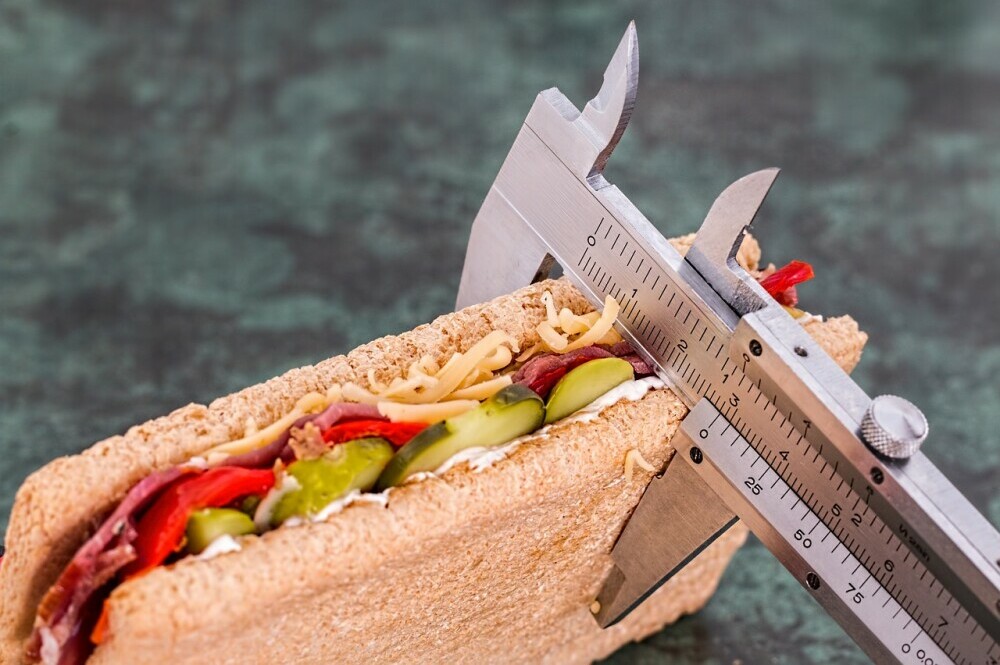Demystifying Calories: A great Guide on Measuring Your Intake.

How to Measure Calories: A Comprehensive Guide
I. Understanding Calories and their Importance
A. What are Calories and Why Do They Matter?
- Defining calories in nutrition: Calories are a unit of energy that our bodies obtain from the food and beverages we consume. They provide fuel for everyday activities and bodily functions.
- Energy balance and weight management: Calories play a crucial role in maintaining a healthy weight. Striking a balance between energy intake (calories consumed) and energy expenditure (calories burned) is key.
- Impact on overall health and body composition: Consistently consuming an appropriate amount of calories is important for maintaining overall health and achieving optimal body composition.
B. The Science behind Calorie Measurement
- Caloric content determination: Scientists determine the caloric content of food through a process called bomb calorimetry. This method involves burning the food and measuring the heat released to determine its energy value.
- Measuring food calories: Food calories are often estimated using nutrient composition databases, which provide values for macronutrients such as carbohydrates, proteins, and fats.
- Energy expenditure calculations: Various methods, including indirect calorimetry and activity trackers, are used to estimate energy expenditure and determine how many calories an individual burns throughout the day.
C. Differentiating Calories from Macronutrients
- Calories vs. carbohydrates: While carbohydrates provide 4 calories per gram, our bodies require them for energy production and brain function.
- Calories vs. proteins: Proteins also provide 4 calories per gram and are essential for building and repairing tissues, as well as supporting various physiological processes.
- Calories vs. fats: Fats are the most calorie-dense macronutrient, providing 9 calories per gram. They are crucial for hormone production, insulation, and energy storage.
D. Debunking Common Calorie Myths
- Myth: All calories are equal: Not all calories are created equal. The source of the calories and the accompanying nutrients can influence how our bodies process them.
- Myth: Consuming fewer calories always leads to weight loss: While creating a calorie deficit is necessary for weight loss, factors like metabolism, genetics, and lifestyle also play a role.
- Myth: Caloric estimations on food labels are always accurate: Food labels provide average values, but individual variations and processing methods can lead to discrepancies between labeled and actual calorie content.
II. Estimating Caloric Intake for Health and Weight Management
 `
`
A. Determining Daily Caloric Needs
- Basal Metabolic Rate (BMR) calculations: BMR represents the number of calories your body needs to maintain basic physiological functions at rest. Several formulas, considering factors like age, weight, height, and sex, can help estimate BMR.
- Physical activity level adjustments: To determine total daily energy expenditure (TDEE), you need to multiply your BMR by an activity factor that reflects your physical activity level.
- Factors influencing individual differences: Age, body composition, metabolism, and overall health status can influence an individual’s caloric needs.
B. Methods for Tracking Caloric Intake
- Calorie counting through food diaries: Keeping a food diary and meticulously recording the calorie content of each food item consumed can provide a precise estimate of your daily caloric intake.
- Utilizing smartphone applications: Numerous mobile apps offer food tracking features that allow you to log your meals and monitor your daily calorie intake conveniently.
- Online platforms for monitoring food consumption: Web-based platforms provide extensive food databases and resources for tracking and managing your caloric intake.
C. Portion Control and Serving Sizes
- Understanding standard serving sizes: Familiarize yourself with the recommended serving sizes for different food groups to better gauge your caloric intake.
- Measuring food portions accurately: Use kitchen scales, measuring cups, and other portion control tools to accurately measure the amount of food you consume.
- Tips for effective portion control: Strategies like using smaller plates, slowing down while eating, and being mindful of portion sizes can help control overall caloric intake.
D. Assessing Nutritional Labels
- Interpreting calorie information on food labels: Pay attention to serving sizes and calorie content per serving displayed on food labels to make informed dietary choices.
- Identifying hidden calories: Some foods or beverages may contain hidden calories from added sugars, oils, or condiments. Carefully read ingredient lists to identify potential sources of hidden calories.
- Navigating misleading food packaging: Food packaging and marketing can sometimes be misleading. Be wary of phrases like “low-fat” or “lite,” as they may not necessarily indicate low-calorie options.
III. Advanced Techniques for Calorie Measurement

A. Laboratory Methods for Calorimetry
- Direct calorimetry: This method involves measuring heat production directly from an individual, typically in a chamber equipped to assess the amount of energy expended.
- Indirect calorimetry: Indirect calorimetry estimates energy expenditure by analyzing the oxygen consumed and carbon dioxide produced during various activities.
- Applications and limitations: Laboratory methods for calorimetry provide accurate measurements but are primarily used for research purposes due to their expensive equipment and specialized settings.
B. Wearable Devices and Fitness Trackers
- Integrated calorie tracking features: Many fitness trackers and wearable devices offer built-in calorie tracking features that estimate energy expenditure based on factors like heart rate, steps taken, and activity duration.
- Accuracy and effectiveness: While wearable devices can provide estimates, their accuracy may vary. Factors like individual variability, device calibration, and placement can affect the accuracy of calorie measurement.
- Considerations when using tracking devices: It’s important to understand the limitations of wearable devices and use them as tools rather than relying solely on their calorie tracking capabilities.
“Wearable devices can be great motivators for staying active, but it’s crucial to remember that their calorie tracking features may not always offer precise measurements. Use them as general guides rather than absolute numbers.” – Personal Opinion
C. Professional Assistance: Nutritionists and Dietitians
- Benefits of personalized calorie monitoring: Working with a nutritionist or dietitian can provide personalized guidance and support in monitoring your caloric intake based on your unique needs and goals.
- Collaborating with experts for better results: Nutrition professionals can help you develop sustainable dietary habits, provide accountability, and address any specific dietary concerns you may have.
- Seeking professional advice for specific dietary needs: If you have specific health conditions or dietary restrictions, consulting a nutritionist or dietitian can ensure that your calorie measurements align with your specific needs.
D. Evaluating Weight Loss Programs and Tools
- Popular weight loss programs’ approaches to calorie measurement: Different weight loss programs may utilize various approaches to calorie measurement, such as point systems, portion control, or pre-packaged meals.
- Monitoring tools within weight loss apps and programs: Many weight loss apps and programs offer calorie tracking features, personalized meal plans, and progress tracking to support individuals in managing their caloric intake effectively.
- Effectiveness and sustainability of different programs: It’s important to evaluate the long-term sustainability and effectiveness of weight loss programs before committing to ensure they align with your goals and lifestyle.
IV. Assessing the Impact of Caloric Intake on Health

A. Relationship between Caloric Intake and Weight Gain/Loss
- Caloric surplus and weight gain: Consistently consuming more calories than your body needs can lead to weight gain as the excess energy is stored as body fat.
- Caloric deficit and weight loss: Creating a calorie deficit by consuming fewer calories than your body burns can lead to weight loss as your body taps into stored energy (fat) for fuel.
- Long-term implications on metabolism and body composition: Sustained caloric imbalances can influence metabolism and body composition over time, potentially impacting weight management efforts.
B. The Effect of Calorie Source on Health
- Differentiating between nutrient-dense and energy-dense foods: Nutrient-dense foods, such as fruits, vegetables, and whole grains, provide essential vitamins, minerals, and fiber along with calories. Energy-dense foods, like sugary snacks and fried foods, may contribute excess calories without providing significant nutritional value.
- Health risks associated with excessive calorie consumption: Consuming excessive calories, especially from unhealthy sources, can contribute to weight gain, obesity, and an increased risk of chronic diseases like heart disease, type 2 diabetes, and certain cancers.
- Balancing caloric intake for overall well-being: It’s important to strike a balance between caloric intake and nutrient density to support optimal health and well-being. Including a variety of nutrient-rich foods while being mindful of portion sizes can help achieve this balance.
C. Managing Caloric Intake for Specific Health Conditions
- Caloric considerations for diabetes management: Individuals with diabetes often need to manage their carbohydrate intake to control blood sugar levels, while also considering overall caloric intake for weight management and overall health.
- Caloric intake for cardiovascular health: A heart-healthy diet involves managing caloric intake to maintain a healthy weight and adopting dietary patterns that promote heart health, such as reducing saturated and trans fats, and increasing intake of fruits, vegetables, and whole grains.
- Caloric needs during pregnancy and breastfeeding: Pregnant and breastfeeding individuals require additional calories to support the growth and development of the baby. Consultation with healthcare professionals is recommended to determine appropriate caloric intake for these periods.
V. Summary and FAQs
A. Summary of Key Findings and Takeaways
- It is crucial to understand calories and their importance in maintaining a healthy weight and overall health.
- Calorie measurement methods range from laboratory techniques to wearable devices and tracking apps.
- Nutritionists and dietitians can provide personalized guidance for managing caloric intake effectively.
- Assessing the impact of caloric intake on health requires considering weight management, calorie sources, and specific health conditions.
B. Frequently Asked Questions (FAQs)
- How does alcohol contribute to calorie intake?
-
- Alcohol contributes calories (7 calories per gram) but lacks the essential nutrients provided by other macronutrients.
- Are calories the only important factor in weight management?
-
- While calories play a significant role, other factors like macronutrient composition, overall dietary quality, physical activity, and genetics also influence weight management.
- Is it possible to accurately measure burned calories during exercise?
-
- Accurately measuring burned calories during exercise can be challenging due to individual variability and the inherent limitations of tracking methods. Estimates serve as general guidelines rather than precise measurements.
“Remember, managing your caloric intake is about finding a balanced approach that suits your needs and lifestyle. It’s not just about the numbers, but also the overall quality and composition of your diet.” – Personal Opinion
